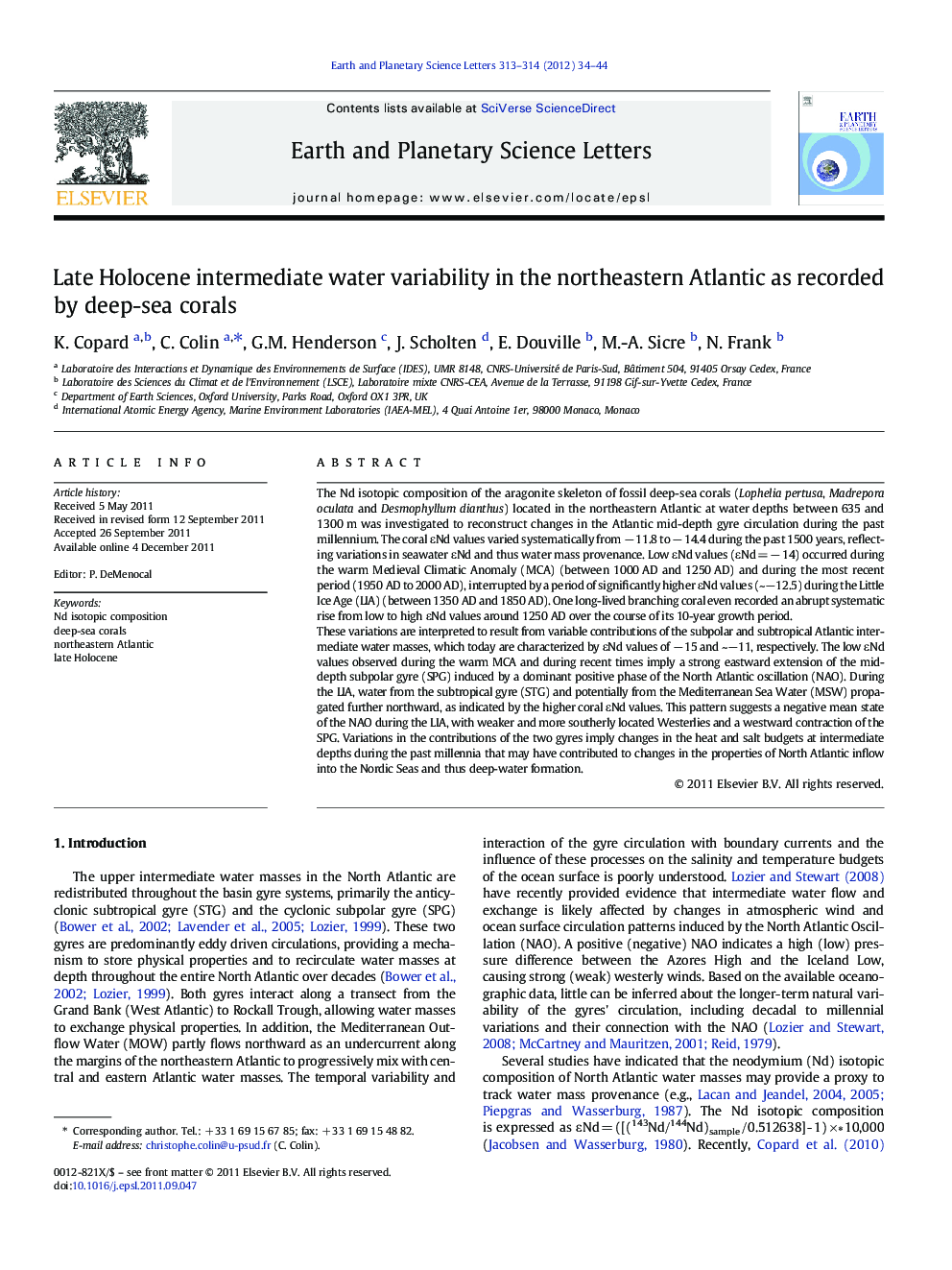| Article ID | Journal | Published Year | Pages | File Type |
|---|---|---|---|---|
| 4677665 | Earth and Planetary Science Letters | 2012 | 11 Pages |
The Nd isotopic composition of the aragonite skeleton of fossil deep-sea corals (Lophelia pertusa, Madrepora oculata and Desmophyllum dianthus) located in the northeastern Atlantic at water depths between 635 and 1300 m was investigated to reconstruct changes in the Atlantic mid-depth gyre circulation during the past millennium. The coral εNd values varied systematically from − 11.8 to − 14.4 during the past 1500 years, reflecting variations in seawater εNd and thus water mass provenance. Low εNd values (εNd = − 14) occurred during the warm Medieval Climatic Anomaly (MCA) (between 1000 AD and 1250 AD) and during the most recent period (1950 AD to 2000 AD), interrupted by a period of significantly higher εNd values (~−12.5) during the Little Ice Age (LIA) (between 1350 AD and 1850 AD). One long-lived branching coral even recorded an abrupt systematic rise from low to high εNd values around 1250 AD over the course of its 10-year growth period.These variations are interpreted to result from variable contributions of the subpolar and subtropical Atlantic intermediate water masses, which today are characterized by εNd values of − 15 and ~−11, respectively. The low εNd values observed during the warm MCA and during recent times imply a strong eastward extension of the mid-depth subpolar gyre (SPG) induced by a dominant positive phase of the North Atlantic oscillation (NAO). During the LIA, water from the subtropical gyre (STG) and potentially from the Mediterranean Sea Water (MSW) propagated further northward, as indicated by the higher coral εNd values. This pattern suggests a negative mean state of the NAO during the LIA, with weaker and more southerly located Westerlies and a westward contraction of the SPG. Variations in the contributions of the two gyres imply changes in the heat and salt budgets at intermediate depths during the past millennia that may have contributed to changes in the properties of North Atlantic inflow into the Nordic Seas and thus deep-water formation.
► εNd of U–Th dated deep-sea corals from Rockall Trough have been investigated. ► Corals εNd indicate strong hydrological changes during the last 1500 yrs. ► This εNd variability indicates major changes in mid-depth gyre circulation (STG-SPG). ► The warm MCA is characterized by a strong eastward extension of the mid-depth SPG. ► This mid-depth hydrological re-organization is attributed to a change in the NAO.
